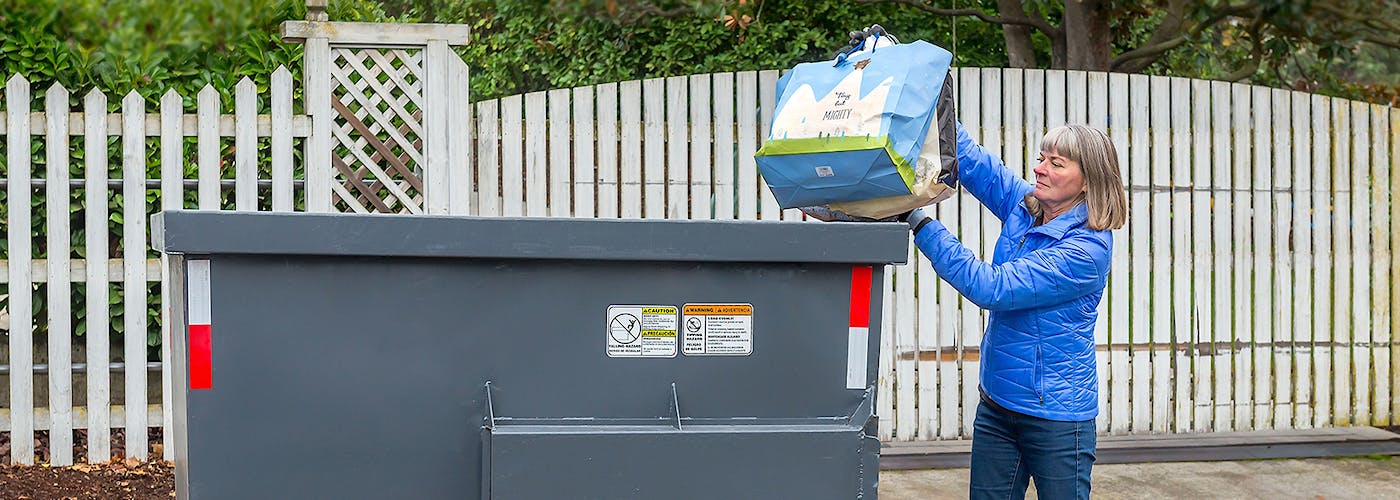How to Choose the Right Size Dumpster Rental for Your Project
Renting a dumpster is an essential part of managing waste for home renovations, construction projects, and major cleanouts. Choosing the right size can make the process more efficient, saving both time and money. Selecting a dumpster that is too small may lead to overflow or require additional rentals, while one that is too large might cost more than necessary. Understanding how to determine the appropriate size for your needs will help streamline your project and avoid unnecessary expenses.

Assessing the Scope of Your Project
The first step in choosing the right dumpster size is evaluating the scope of your project. A small-scale home cleanup or minor renovation will not generate as much waste as a full-scale demolition or construction job. Consider the type and volume of materials that need to be disposed of, as well as any special waste requirements. Yard debris, furniture, and household junk take up different amounts of space compared to construction materials like concrete, drywall, or roofing shingles.
For household cleanouts, such as clearing out a garage or attic, a smaller dumpster may be sufficient. Home remodeling projects, including kitchen or bathroom renovations, will likely require a medium-sized container. Large construction jobs, roofing replacements, or estate cleanouts may demand a much bigger dumpster to accommodate the high volume of waste.
Understanding Dumpster Sizes and Their Uses
Dumpsters are available in various sizes, typically measured in cubic yards. The most common sizes include 10-yard, 20-yard, 30-yard, and 40-yard containers. Each size serves a specific purpose, and selecting the right one depends on the amount of debris your project will generate.
A 10-yard dumpster is ideal for small-scale projects such as minor home renovations, small landscaping jobs, or decluttering a single room. It is compact and fits easily in driveways or tight spaces, making it a convenient option for homeowners with limited space.
A 20-yard dumpster works well for medium-sized projects, including kitchen or bathroom remodels, deck removals, or moderate cleanouts. This size provides more room while remaining manageable for residential and commercial use.
A 30-yard dumpster is suited for larger renovations, new home construction, or major home cleanouts. It can accommodate bulkier materials and a greater volume of waste without requiring multiple rentals.
A 40-yard dumpster is the largest standard option and is often used for commercial construction projects, extensive home remodels, or estate cleanouts. This size is best for projects generating substantial debris, such as demolitions or whole-home renovations.
Factoring in Weight Limits and Restrictions
Each dumpster size comes with specific weight limits that must be considered before renting. Different materials have varying densities, and exceeding the weight limit can result in overage charges. Construction debris, including concrete, bricks, and dirt, can quickly become heavy, whereas household junk and furniture are typically lighter but may take up more space.
It is essential to check with the rental company about weight restrictions, particularly if your project involves disposing of dense materials. Some companies may offer specialized dumpsters for heavy debris to prevent exceeding the weight allowance. Properly estimating the weight of your waste will help ensure you stay within the limits and avoid additional fees.
Considering Space Availability
 The location where the dumpster will be placed is another crucial factor in choosing the right size. Driveways, parking lots, and construction sites all have different space limitations. A smaller dumpster may be more practical for residential areas where space is restricted, while larger ones are better suited for open areas or commercial sites.
The location where the dumpster will be placed is another crucial factor in choosing the right size. Driveways, parking lots, and construction sites all have different space limitations. A smaller dumpster may be more practical for residential areas where space is restricted, while larger ones are better suited for open areas or commercial sites.
Before renting, measure the designated drop-off area to ensure the dumpster will fit. Keep in mind that clearance is necessary for delivery and pickup, so overhead obstacles such as tree branches, power lines, or structures should also be considered. Ensuring proper placement will make loading waste easier and prevent access issues for the rental company.
Estimating the Amount of Waste
Accurately estimating the amount of waste your project will generate can help in selecting the right dumpster size. One way to gauge this is by considering how many pickup truck loads your debris would fill. Many rental companies provide guidelines comparing dumpsters to truckloads, making it easier to visualize the capacity needed.
It is generally better to choose a slightly larger dumpster than one that may be too small. Overestimating ensures all waste is contained in one rental, reducing the need for additional pickups or overage fees. When in doubt, consulting with a dumpster rental provider can help determine the best size based on your specific project details.
Checking Local Regulations and Permits
Some locations require permits for placing dumpsters on public property, such as streets or sidewalks. Before finalizing your rental, check with local authorities to determine if a permit is needed. Failure to obtain the necessary approval could result in fines or removal of the dumpster.
Additionally, rental companies may have restrictions on prohibited items, such as hazardous waste, chemicals, or electronics. Reviewing the guidelines in advance ensures compliance with local waste disposal regulations and prevents complications during pickup.